Deadlock MOBA Shooter Hybrid Explained: Key Features, Gameplay & Development
Updated On: November 29, 2025 by Aaron Connolly
What Is Deadlock? MOBA Shooter Hybrid Breakdown
Deadlock is Valve’s big, bold 6v6 multiplayer game that mashes together MOBA strategy and third-person shooting in a wild, alternate 1940s New York. You get a mix of MOBA elements—lanes, towers, farming creeps—layered with hero shooter gunplay and a surprising amount of vertical movement.
Core Gameplay Concept
Two teams of six jump into a map with four lanes, fighting to smash the enemy base. The match runs on classic MOBA lines: you’re pushing trooper waves through three sets of defensive towers called Guardians.
You pick from a bunch of unique heroes—no duplicates allowed. When you kill troopers, you grab souls, which you spend on items and building up your character’s loadout.
Match Structure:
- Early Game (0-10 minutes): You’re farming lanes, poking at towers, and just feeling out the map.
- Mid Game (10-20 minutes): Roaming, ganking, and fighting for big objectives starts heating up.
- Late Game (20+ minutes): Team fights get wild, and everyone’s trying to break into bases.
The main goal is to destroy both enemy Shrines, which exposes the Patron—their final defensive boss. Most matches last around 20-30 minutes, but if things get spicy, you might see games run 45-60 minutes.
How Deadlock Blends MOBA and Shooter Elements
Players say it feels like 80% MOBA, 20% hero shooter. You get MOBA staples—denying creeps, jungle camps, and snowballing with items—but the shooter twist adds a third-person view and ziplines that let you zip between lanes in seconds.
Gunplay and abilities both matter, so you need good aim to clear creeps and take down enemies.
MOBA Elements:
- Four-lane map with towers to break through
- Farming creeps for souls
- Building items and progressing your hero
- Going after strategic objectives like the Mid Boss
Shooter Features:
- Third-person aiming and gunfights
- Ziplines and vertical movement
- Hero abilities you fire off in combat
- Fast, mobile team fights
One example is the Spirit Urn objective. You have to carry it across the map, but you can’t use your weapons while holding it, so you’ve got to balance risk and reward.
Key Differences from Other Games
Deadlock’s third-person view makes verticality a real factor, which changes how you position in team fights compared to League of Legends or Dota 2. The four-lane setup is another twist—it’s not the usual three lanes. Lane assignments are random at the start, and you get to your spot by riding ziplines.
Unique Features:
- An alternate 1940s “Cursed Apple” New York vibe
- Play as humans, robots, and demons
- Soul collecting with denial mechanics
- Mid Boss kills grant a Rejuvenator buff
Valve’s keeping the game in private alpha for now, and you need an invite from a current player to get in. Even so, over 160,000 people have piled in during testing.
Deadlock is Valve’s shot at evolving the MOBA genre by tossing in shooter mechanics. It’s probably going to pull in both MOBA fans and shooter players who want deeper strategy.
Valve’s Vision and Development Journey
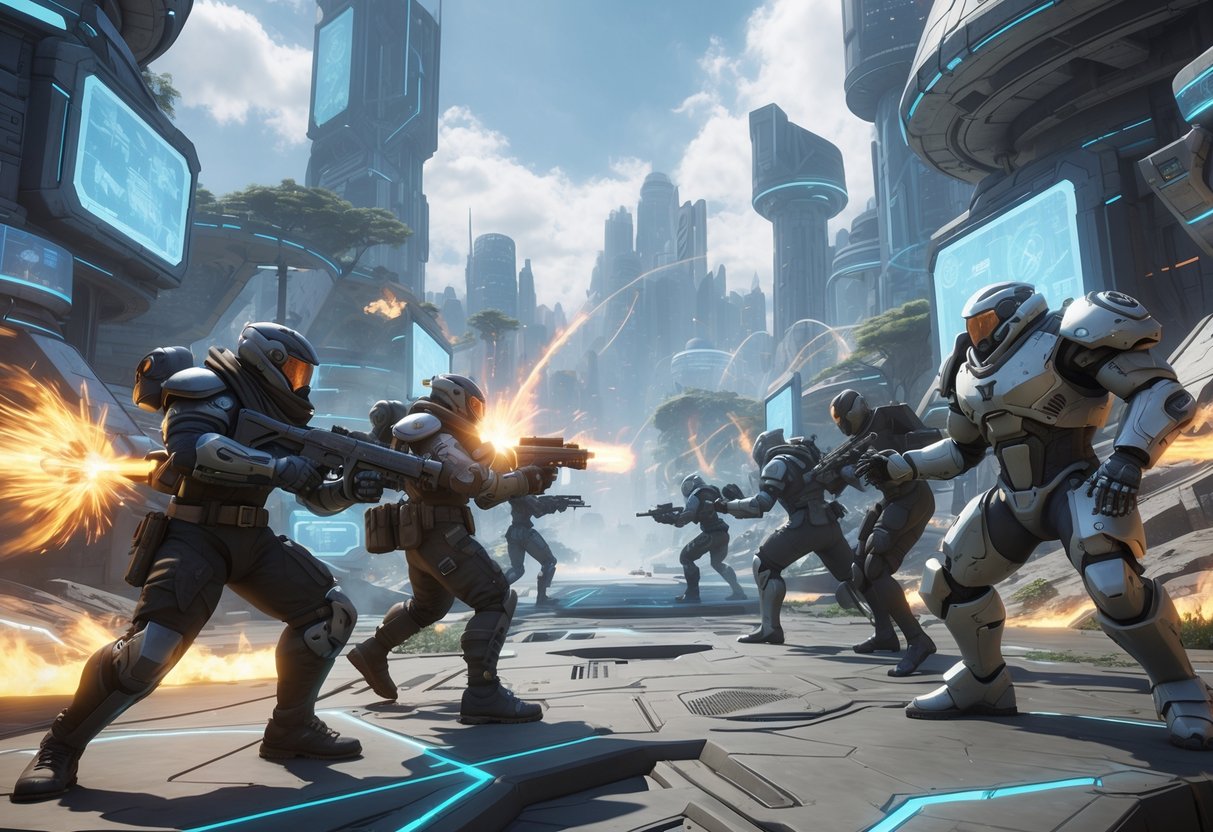
Valve spent years secretly working on Deadlock, making big rebranding calls and leaning on their MOBA chops. The game started as Neon Prime before Valve turned it into the shooter-MOBA hybrid it is now.
Origins and Early Development
Valve kicked off Deadlock’s development several years ago, keeping everything under wraps. They stuck to their usual style—no big announcements, just quiet progress.
Their early goal? Build a new kind of competitive game. They wanted the strategic depth of MOBAs but with the pace of hero shooters. Honestly, it wasn’t their first time mixing genres.
The team leaned on lessons from Dota 2 and Counter-Strike. They knew what keeps competitive games alive—player retention, balance, and deep strategy.
Valve employees started playtesting way before anything went public. They tried out different mechanics and hero designs, changing things up constantly.
Shift from Neon Prime to Deadlock
Originally, Valve called the project “Neon Prime.” That name hinted at a totally different, more futuristic look.
They eventually renamed it Deadlock, which fits the game’s vibe better. Now, players fight for map control and juggle resources and ability timing.
Visual changes came with the new name. The sci-fi look faded, replaced by a more mystical, alternative setting. Designers got more freedom to dream up wild characters.
This rebrand matched Valve’s aim to make something fresh, not just another clone. Deadlock is their swing at creating a new genre altogether.
Role of IceFrog and the Dota 2 Connection
Rumors say IceFrog, the Dota mastermind, is heavily involved in Deadlock. That would explain all the MOBA DNA running through the game.
Key Dota 2 mechanics show up all over Deadlock:
- Laning phases with creep farming
- Denying enemy resources
- Neutral objectives and jungle monsters
- Snowballing for skilled players
IceFrog’s approach always focuses on deep, interconnected systems. That’s how you get a game people stick with for thousands of hours.
Valve’s Dota 2 experience taught them a lot about balancing competitive games. They know regular updates, community input, and esports support matter. Those lessons shape Deadlock’s development.
Unique Gameplay Mechanics
Deadlock blends classic MOBA lanes with third-person shooting, opening up new tactical options you just don’t see elsewhere. The game’s vertical movement lets you zip between lanes, and the NPCs force you to use both aim and timing.
Lane System and Map Layout
Instead of three lanes, Deadlock gives you a four-lane map. That means more strategic choices for rotating and split-pushing.
Each lane leads to a central area where the enemy Patron floats—the big objective. To hit the Patron, you’ve got to break down two enemy guardians in each lane first.
The map’s got multiple vertical levels—not something you see in most MOBAs. Buildings and structures create height differences, which change shooting angles and movement.
Quick tip: Try focusing on one lane at first to get the hang of things before you start bouncing all over the map.
You can attack objectives from above or below, using ziplines and climbing. This three-dimensional gameplay means you’ve always got to watch your back (and your head).
Movement and Mobility Features
The zip line system links up the map, letting you jump between lanes fast. You can even shoot while riding ziplines, which leads to some wild mid-air fights.
Wall climbing and double jumps add even more ways to move. Dodging ganks by scaling a building or chasing someone over rooftops? That’s all fair game.
Dash abilities differ from hero to hero, but most have something for quick repositioning. These combine with classic MOBA skills to create a hybrid combat style.
Movement speed isn’t just about getting around. It affects your aim and how fast you can farm. Fast heroes can zip between lanes, scooping up souls before others can react.
Mixing shooter mechanics with MOBA positioning means your aim matters as much as your map smarts.
NPCs, Troopers, and Guardians
Troopers take the place of MOBA minions, but you have to shoot them at the right moment to grab their souls. No lazy last-hitting here.
Jungle areas between lanes spawn neutral NPCs. These give you extra souls, but they’re tough to clear solo—you’ll want backup.
Lane Guardians are basically towers, but they act more like raid bosses. They have phases, and you need your whole team to bring them down.
Each Guardian has weak points you need to target with your shots. It’s a shooter twist on classic tower sieges.
Heads up: Guardians get way tougher when enemy heroes show up to defend, so timing your pushes is everything.
Some NPCs drop buffs when you take them down—think jungle monsters, but you’ve got to aim well to win those rewards.
Heroes and Playable Characters
Deadlock’s roster has 32 heroes in its main lineup and a few more in experimental modes, with six new ones being tested in Hero Labs. Each hero brings a different playstyle that shapes team composition and strategy.
Diversity of Heroes
The hero pool covers a lot of ground. You’ll find frontline bruisers like Abrams, supports such as Dynamo, and ranged assassins like Grey Talon.
Valve keeps adding to the roster. In October 2024, they dropped six more experimental heroes: Calico, Fathom, Holliday, Magician, Viper, and Wrecker. For now, you’ll only find them in Hero Sandbox mode.
Each hero fills a certain team role. Some are up-close brawlers, others pick you off from a distance. This variety keeps teams flexible and strategies fresh.
Design-wise, it’s not quite Team Fortress 2 or Overwatch. Deadlock’s heroes have MOBA-style abilities plus shooter mechanics, so you get a hybrid feel.
Abilities and Roles
Every hero rocks four abilities and a unique weapon. These define what they do on the field and how you’ll use them tactically.
Support heroes like Dynamo heal and control crowds. He’s got Rejuvenating Aurora for heals and Singularity to toss enemies around.
Assassins such as Haze deal burst damage and sneak around. Her Sleep Dagger disables targets, and Smoke Bomb makes her vanish for better positioning.
Frontline fighters like Abrams soak up damage and control space. His Siphon Life drains health, and Seismic Impact stuns in an area.
Most heroes can build different ways with the item system. That means you can tweak your playstyle to fit your team or just your own mood.
Notable Heroes: Shiv and Beyond
Shiv is a fan favorite—super mobile, all about aggressive melee combat. His kit lets him dive in, finish fights fast, and get out.
Bebop brings a bomber’s toolkit. He’s got Sticky Bombs and a Hook for yanking people, and his Hyper Beam ultimate can really wreck a team.
Grey Talon shines as a ranged specialist. He’s got a Charged Shot that pierces targets and Rain of Arrows for high-damage aerial attacks.
Infernus focuses on burning enemies down over time. His Catalyst slows and amplifies damage, making him perfect for locking down areas.
These heroes show off Deadlock’s range—from sneaky assassins to heavy bruisers. Each one takes different skills and a bit of tactical thinking to really master.
The Item Shop and Progression System
Deadlock’s item shop lets you use souls as currency to buy upgrades in three categories: Vitality, Weapon, and Spirit.
At the start, you only have a few inventory slots. You’ll unlock more by destroying enemy structures, so you need to pick carefully which items you want to focus on during a match.
How the Item Shop Works
You’ll find a tiered pricing system in the shop, with items costing anywhere from 500 to 6,300 souls. You begin each match with 12 inventory slots, but four of those go straight to the three main item categories.
Item Categories:
- Weapon Items – These boost melee and ranged combat, affecting things like reload speed and adding bullet shields.
- Vitality Items – They help you survive longer and offer team utility or regeneration.
- Spirit Items – These increase ability power or tweak stats like attack speed or ammo capacity.
When you destroy enemy defensive structures, you unlock up to four extra slots. This opens up big choices: do you beef up what you have, or grab something totally new?
If you upgrade an item, you get a component discount. For example, buy a Basic Magazine first and you’ll pay less for its upgrade, Titanic Magazine. You only get the discount once per component, though.
Using Souls as Currency
Souls act as your main resource in Deadlock. You earn them by defeating enemies, smashing objectives, and finishing map activities.
The tricky part? Spending souls wisely as the match moves along.
Early Game Strategy:
- Stick to 500–1,500 soul items for quick power boosts.
- Pick items that patch up your hero’s weak spots.
- Don’t blow all your souls on pricey upgrades right away.
Late Game Approach:
- High-tier items pack more punch, even if the percentage gains feel smaller.
- Watch what the enemy is building and grab counter-items if you need them.
- Mix offense with some defense—don’t get greedy.
You can sell items back to the shop for half their price. That’s handy if you want to experiment or switch things up as the game changes. A lot of players forget about this and miss out on adapting their builds.
Key Items and Build Strategies
To build well, you need to know your hero’s role and watch what the enemy’s doing. Each item category gives you different choices, so you can swap things around if needed.
Role-Based Priorities:
| Hero Type | Primary Focus | Secondary Considerations |
|---|---|---|
| Haze | Weapon damage items | Bullet shields, regeneration |
| Abrams | Spirit Strike items | Close-range enhancements |
| Warden | Attack speed boosts | Team utility items |
Counter-Item Examples:
- Reactive Barrier or Metal Skin work well against weapon-heavy foes like Wraith.
- Knockdown brings flying heroes like Vindicta back to the ground.
- Spirit resistance items help against ability-focused enemies.
Hover over items in the shop to see all the details. After you die, check what damage type took you out—maybe you could have survived with a different item. Press Tab often to keep an eye on both teams’ builds and change your plan if you need to.
Lanes, Objectives, and Victory Conditions
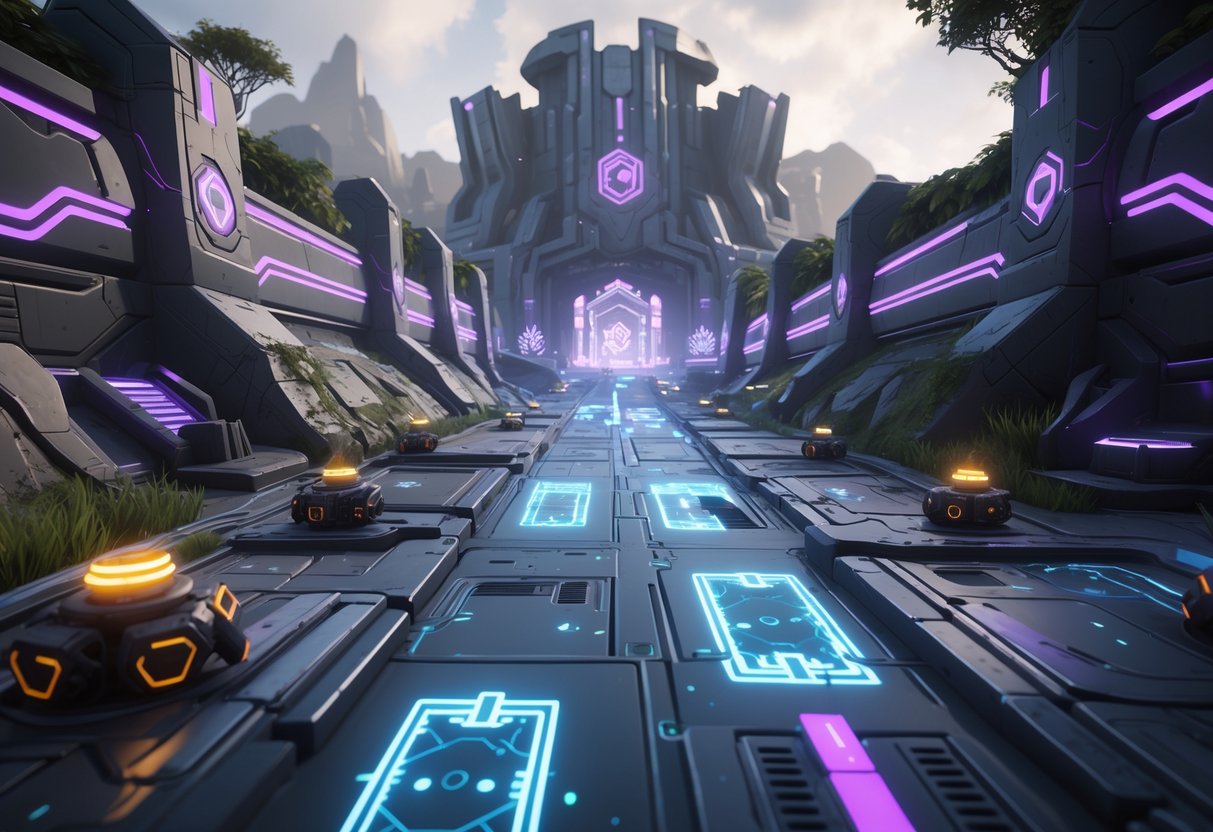
Deadlock drops you into a three-lane map where teams push through objectives to reach and destroy the enemy’s Patron.
Every lane has Guardians, Walkers, and Base Guardians. You have to clear them in order before you can reach the enemy base and win.
Three-Lane Map Structure
The map has three lanes, each connecting your base to the other team’s. You’ll fight enemy players and push minions forward in these lanes.
Deadlock’s lanes don’t work quite like a typical MOBA. You need minions to absorb damage from lane objectives—otherwise, those structures barely take a scratch.
Key lane mechanics:
- Minions spawn on a timer and march down each lane.
- You farm souls by killing minions.
- Whoever controls more lanes gets more map pressure and opens up objectives.
- Each lane matters on its own, but they all tie together for overall control.
Early on, you’ll focus on laning basics: trading hits, farming minions for souls, and poking Guardians when it’s safe.
As the match goes on, team fights break out around big objectives. Walker fights usually need a whole squad.
Patron and Walkers Explained
The Patron is Deadlock’s version of the main base objective. It’s a big, floating enemy in the other team’s base—you have to take it down to win.
Before you get there, you’ll need to clear out Walkers. These huge lane objectives show up mid-game and need solid teamwork to kill.
Walker fight tips:
- Keep your distance to dodge their stun attacks.
- Watch out for fireballs.
- Let your minions soak up damage while your team focuses fire.
- Spread out so you don’t all get hit at once.
Two Shrines guard the Patron inside the base. They don’t deal damage, but you need to destroy them before you can hit the Patron.
The Patron fight happens in two parts. First, you damage it until it’s weak, then it teleports to a pit near the enemy spawn for the final showdown.
Win Conditions and Team Strategies
To win, you have to destroy the enemy Patron, but you can’t just rush it. Each lane has its own sequence of objectives you need to clear.
Standard lane progression:
- Single Guardian (early game)
- Walker (mid game)
- Base Guardians (for late game access)
When you clear Base Guardians, you open up a flex spot in your team’s builds and cut the enemy’s soul income from that lane. That’s a big edge for your final push.
Teamwork matters for:
- Taking down Walkers (you’ll need three or four players, minimum)
- Sieging the base against defenders
- Fighting the Patron with good positioning and focus
Honestly, it’s smarter to pick one or two lanes and push hard, rather than spreading out everywhere. Grouped pushes break defenses way faster than splitting up.
The last Shrine and Patron fight need real planning. If your team wipes at the wrong time, those long respawn timers can hand the game to the enemy.
Setting and Lore: A Supernatural New York City
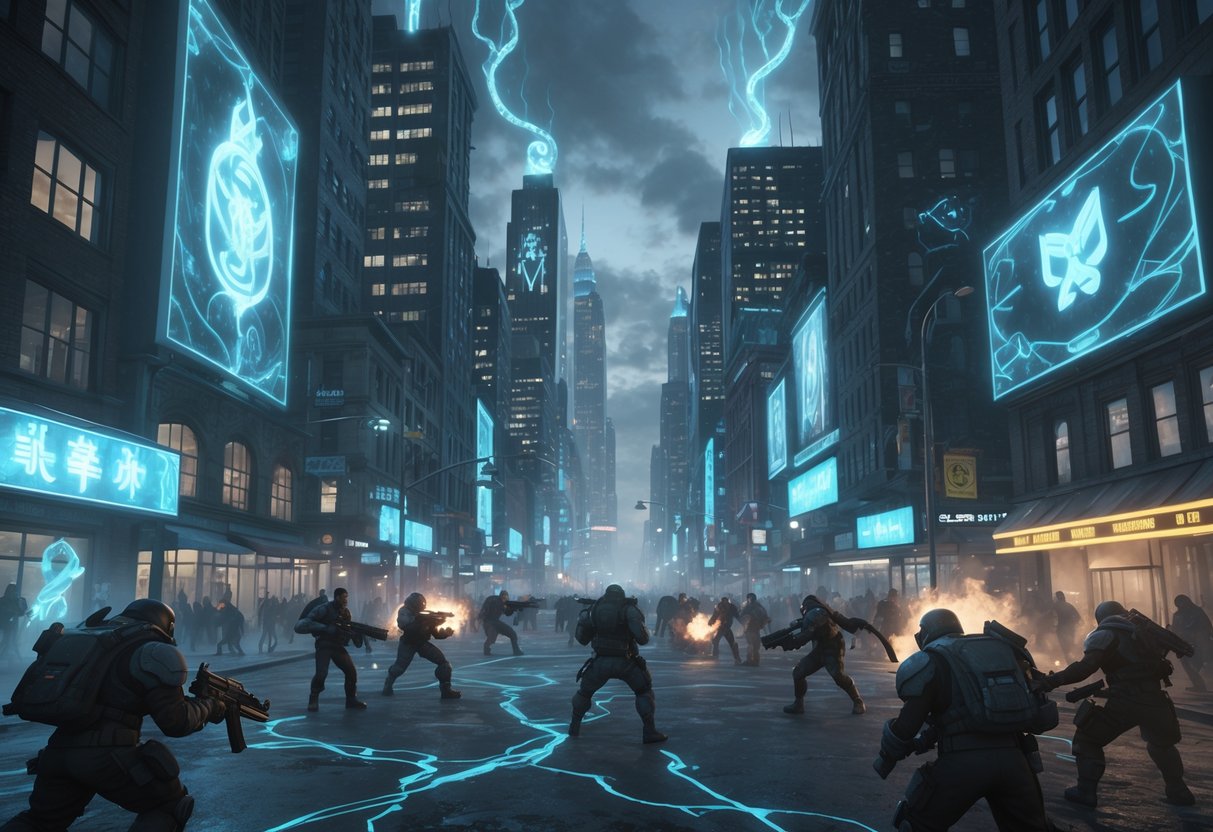
Deadlock takes place in the “Cursed Apple,” a twisted, supernatural version of 1930s New York City.
Here, supernatural forces aren’t just rumors—they’re part of daily life. The lore revolves around two powerful entities called Patrons, both fighting to break into our world while different factions scheme and clash in the shadows.
The Maelstrom and Its Impact
Magic and the supernatural always lurked in Deadlock’s world, but everything changed at the end of the 19th century. An eclipse kicked off the Maelstrom, a disaster that tore open Astral Gates around the world.
These Astral Gates became the main links between Earth and other realms. Before the Maelstrom, most folks shrugged off supernatural stuff as fairy tales. Fifty years later, nobody doubts it anymore.
Two Patrons—the Amber Hand and the Sapphire Flame—are trying to cross over. They promise to grant wishes to anyone who helps them finish a ritual. That ritual? It’s the reason two teams battle in the Cursed Apple’s haunted streets.
Each team tries to stop the other from summoning their Patron. This conflict drives the action in every match.
Organisations and Factions
Several groups operate in this alternate New York, each with their own agendas:
Government and Law Enforcement:
- Occult Security and Investigation Commission (OSIC) – A secret government agency handling supernatural threats.
- Municipal Coven – The city’s official caretakers.
Private Interests:
- Fairfax Industries – A major player in the occult industrial scene.
- The Baxter Society – Professional monster hunters.
- The New York Oracle – Reporters digging up the latest occult news.
Underground Groups:
- The Tunnel Rats – The heart of New York’s criminal underworld.
- The Mendoza Syndicate – A broken crime group that once ruled Spanish Harlem.
- Friends of Humanity – Extremists obsessed with keeping humanity safe, no matter the cost.
These factions weave a tangled web of alliances and rivalries, shaping the world’s story.
Noteworthy Characters and Stories
The lore unfolds through hero backstories and, soon, visual novels.
Lady Geist stars in “The Binding of Oathkeeper,” where she has to stop a deadly entity called Oathkeeper from escaping and killing her.
Ivy is on a quest for meaning after taking down the Mendoza Syndicate. Holliday is out for revenge against the Troubadour.
Some heroes come from wild places beyond Earth. A few hail from The Deep, a weird undersea world. Others are from Ixia, a realm full of demon-like beings.
The Cursed Apple itself is packed with memorable spots—like the Bear Pit, an underground brawl arena, or Jezebel’s Billiard Hall, a church-turned-hangout for supernatural types. These places make the city feel alive, even if it’s crawling with the bizarre.
Comparisons With Other Titles
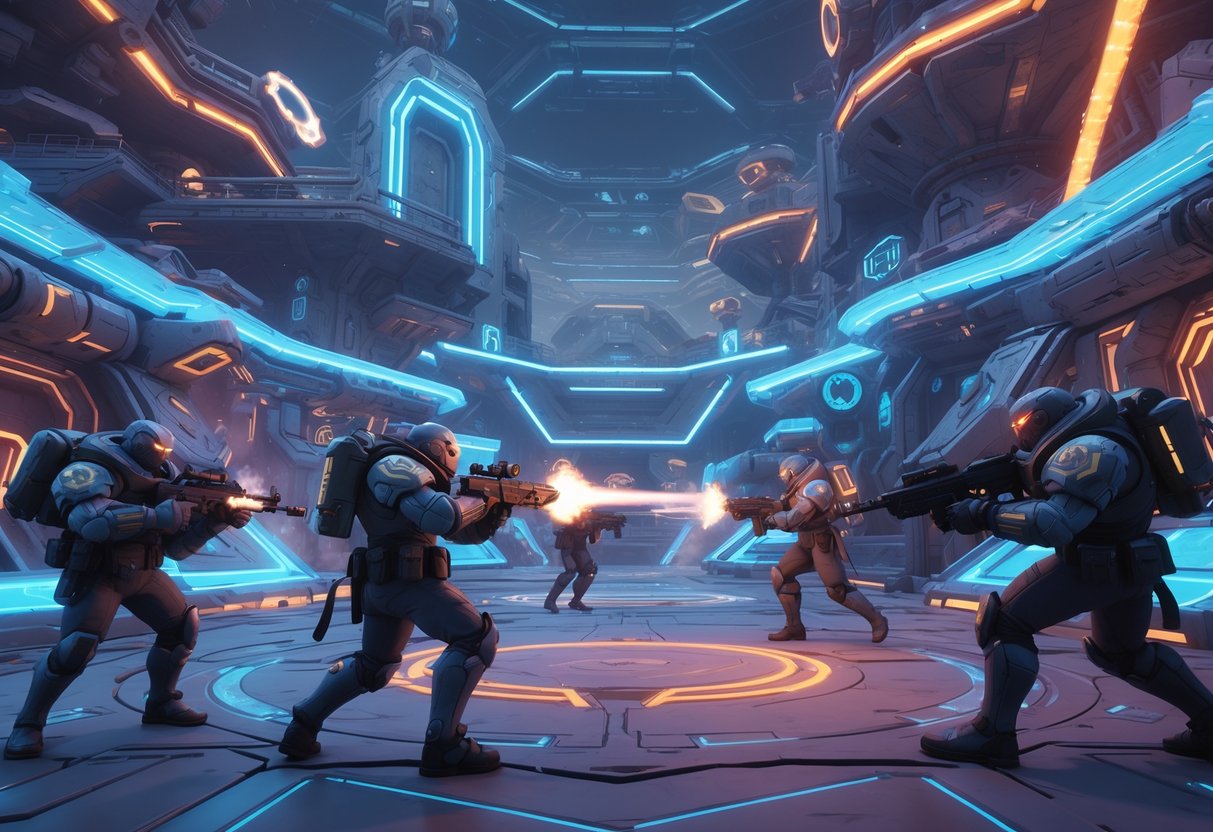
Deadlock borrows a lot from Valve’s own games, but it also pulls in mechanics from the big hero shooters out there.
You’ll spot Dota 2‘s lane setup, Team Fortress 2’s team fights, hero abilities that feel a lot like Overwatch, and even a bit of Counter-Strike 2’s tactics.
Similarities to Dota 2 and Team Fortress 2
Deadlock shares a lot of DNA with Dota 2. Both games have lanes, creeps, last-hitting for gold (or souls), and neutral objectives all over the map.
The shop system works in a familiar way. You get souls by killing creeps and enemies, then spend them on upgrades that boost your stats and abilities.
Team Fortress 2 leaves its mark with Deadlock’s hero-based design and the way teams have to coordinate. The hero roles echo TF2’s class system.
You’ll notice the quirky voice lines and colorful style, too. It’s got that same sense of personality that made TF2 stand out.
The map design mixes Dota 2’s strategic lanes with TF2’s verticality and chokepoints.
Overwatch and Counter-Strike 2 Influences
Deadlock’s heroes feel a lot like Overwatch characters. Some are almost direct copies—Haze’s ultimate is basically Reaper’s Death Blossom, and Vindicta plays like a sniper in Overwatch.
Players can switch up heroes and team comps, just like in Overwatch. You have to balance damage, support, and tanky heroes for best results.
Counter-Strike 2 shows up in Deadlock’s gunplay and economy. The shooting feels tight and skill-based, but abilities add a twist.
Positioning and teamwork matter a ton, just like in CS2. Teams have to push, control sightlines, and manage resources together.
The round-based progression and economy mean early mistakes can snowball, so you have to think ahead and not just rely on raw aim.
Playtesting, Community, and Feedback
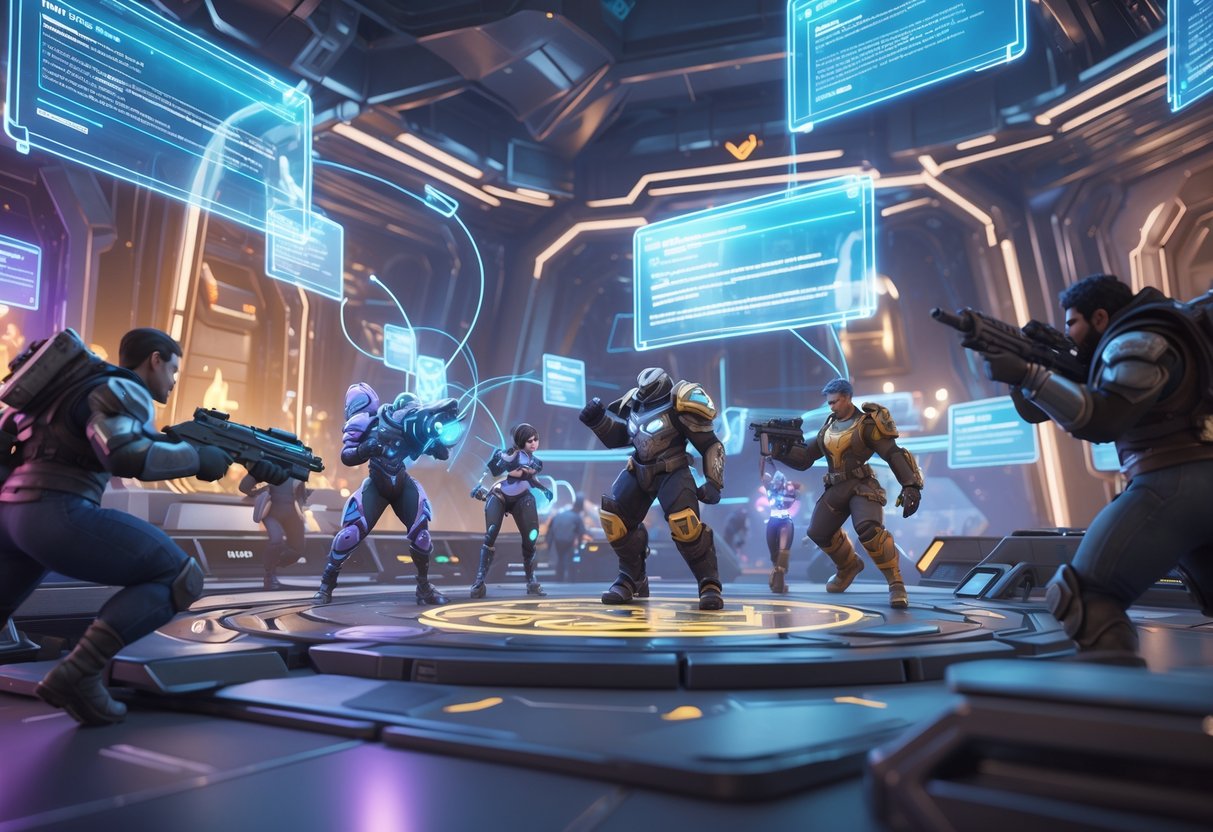
Valve is running Deadlock through a closed alpha on Steam. Players get in through invites or friend referrals.
Even with limited access, the game regularly pulls in close to 100,000 concurrent players. That’s a lot of buzz and feedback, which seems to be shaping the game as it grows.
Closed Playtests and Access
Deadlock is still in closed alpha testing—no public release yet. Valve’s got three main ways to let people in.
Direct invites come straight from Valve to certain Steam users. Nobody really knows why some folks get picked, but if you’re lucky, you’ll spot both a Steam notification and an email invite.
The friend invite system lets current testers bring others in. If you have access, you can toss invites to your Steam friends. Most new players actually get in this way.
Community requests show up on Steam’s Deadlock community page. Players sometimes ask for invites in the comments, but honestly, you’ll need patience and a bit of luck that someone trusts you.
The current build’s about 24GB to download. Valve keeps the servers up all the time for those with access, so it honestly feels more like early access than a typical closed test.
Notable Playtesters and Influencers
Gaming journalists and content creators have gotten early access to share their first impressions. Sean Hollister and other tech reporters have talked about their playtesting experiences in public articles.
YouTubers keep uploading “first impressions” videos with gameplay footage. These clips definitely help drum up community hype, even though not many people can actually play.
A bunch of pro players from other MOBAs and hero shooters have gotten in as well. Their feedback seems especially valuable since they know the genre inside and out.
The playtest crowd includes long-time Valve fans and plenty of Dota 2 and CS2 players. That mix brings feedback from folks who really get Valve’s style.
Streamers with invites often show matches live on Twitch. Valve hasn’t really put strict streaming restrictions in place, so that organic promotion keeps the buzz going.
Community Response and Feedback Loops
Testers have been overwhelmingly positive about Deadlock, even though it’s still in alpha. Some say it’s more polished than games that are actually out.
Steam forums and community chats stay busy. Players swap strategies, post hero guides, and toss out balance suggestions all the time.
Valve reacts quickly to community feedback. The map rework in February 2025—switching from four lanes to three—shows how much they listen.
Balance updates show up a lot, tweaking hero strengths and core mechanics. This rapid pace keeps people engaged and proves Valve’s actually paying attention.
Players often rave about the game’s depth and variety. Even in alpha, some say they’ve been playing regularly for months and aren’t bored yet.
Most people in the community guess we’ll see a late 2025 release window. But with Valve, who really knows? They’ll drop it when they think it’s ready.
Evolution Through Updates and Balance Changes
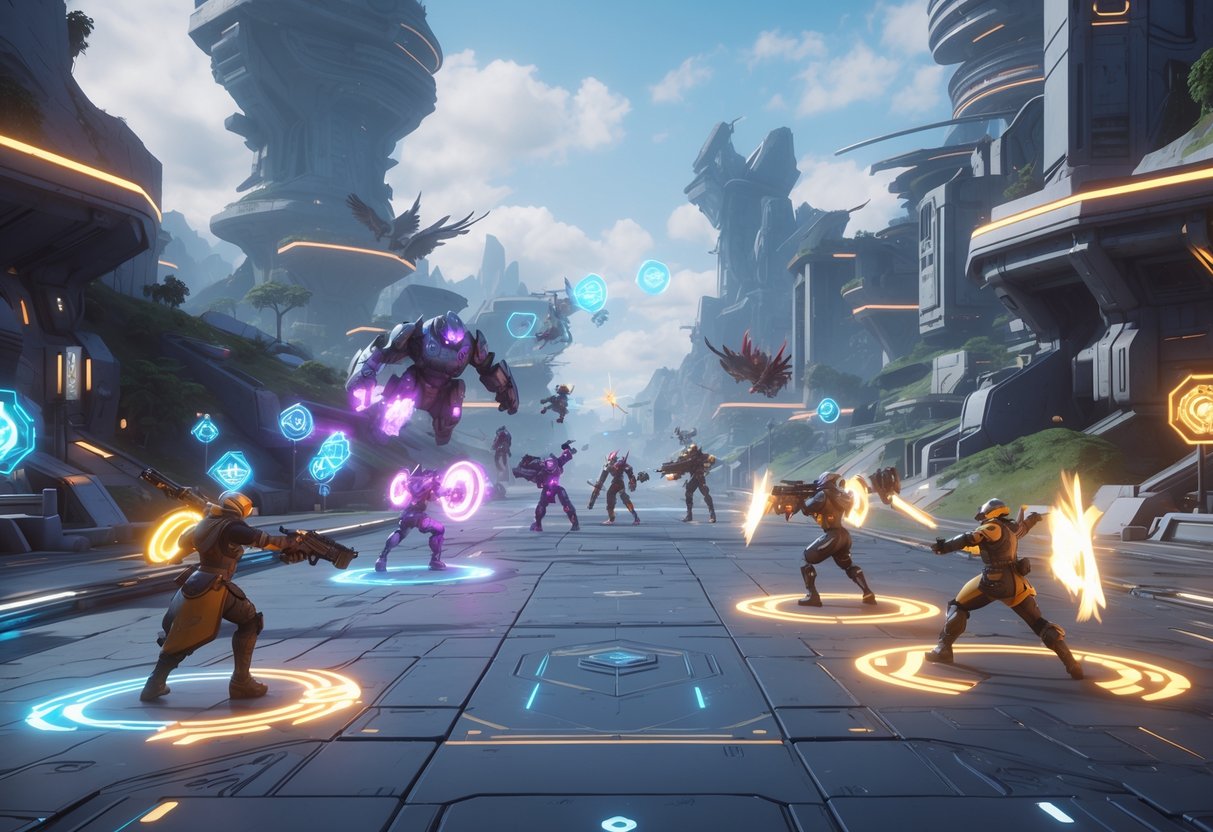
Valve keeps Deadlock fresh with frequent updates—gameplay changes, new content, and core system tweaks. The team pushes out patches several times a week, and major updates bring new heroes, map changes, and system overhauls that keep players on their toes.
Major Game Updates
In August 2025, Valve dropped one of Deadlock’s biggest updates, adding six new heroes in a community-driven rollout. Mina the vampire hit the roster first, and the rest—Billy, Paige, The Doorman, Victor, and Drifter—arrive every Monday, Wednesday, and Friday over two weeks.
The new hero roster includes:
- Mina (vampire glass cannon with Love Bites passive)
- Billy
- Paige
- The Doorman
- Victor
- Drifter
Players earn votes by playing matches, then spend them at voting booths in the new Hideout lobby. This setup lets the community decide which heroes unlock next, so it’s not just about playing matches.
Valve paused hero labs development with this update. They mentioned players liked some hero labs ideas and might revisit them later.
Map and Feature Improvements
The August update brought in The Hideout, a pre-game lobby that replaced the old Dashboard UI. You can now invite friends to your hideout or hop into theirs while waiting for a match.
Key Hideout features:
- Interactive terminals for Play, Watch, and Learn
- Practice range for movement and ability testing
- Social space for hanging out with friends
- Future plans for personalisation and achievements
The map got a facelift with new lighting. Character selection got a “major visual overhaul,” and Valve says more hero visual updates are coming.
You can still access the legacy sandbox through a teleporter in the practice range. That way, experienced players keep their old training spot.
Patch Highlights
Deadlock’s update schedule leans hard on balance tweaks and hero adjustments. Each new hero launch comes with follow-up balance changes as Valve tunes things based on player feedback.
Recent patch focus areas:
- Matchmaking improvements and system reworks
- Interface updates for smoother navigation
- Item shop overhauls for deeper customisation
- Hero mechanic tweaks based on community data
Valve’s staggered release approach is a bit different from their usual style. This way, they can test balance and gather feedback between each hero drop.
Balance changes ramp up as players get better at the MOBA-shooter hybrid. The devs watch community feedback and gameplay stats to keep things competitive.
What’s Next for Deadlock?
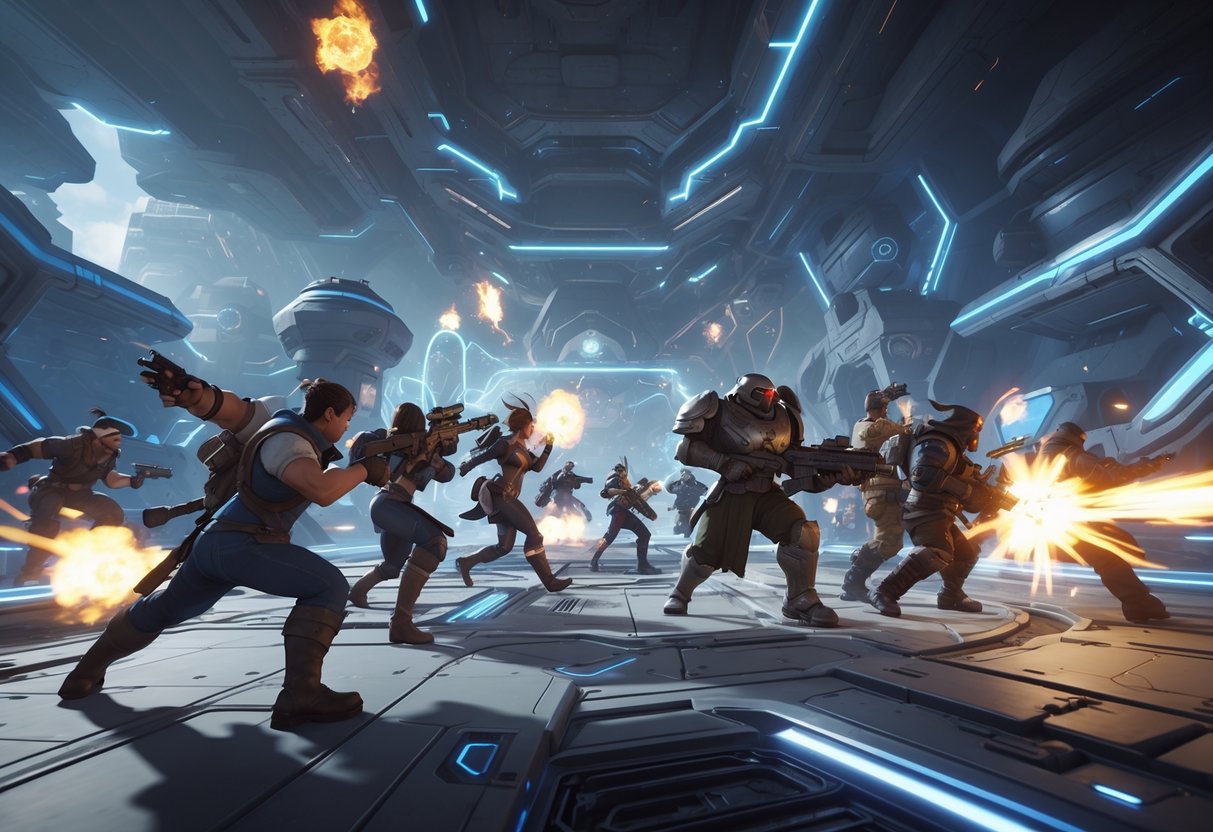
Valve keeps pushing Deadlock forward in closed beta, dropping regular updates and new features. The game’s future really hinges on community feedback, competitive potential, and whether they can nail the MOBA-meets-shooter balance.
Upcoming Features and Roadmap
New Heroes Rolling Out Valve just added six new heroes to Deadlock. Mina the vampire launched first, and the rest—Billy, Paige, The Doorman, Victor, and Drifter—are rolling out over the next couple weeks.
Players vote on which hero comes next, using votes earned from playing matches. It’s a neat way to involve the community in the release order.
The Hideout System The new Hideout pre-game lobby replaced the old dashboard. Now, you can invite friends to your hideout and hang out while queuing.
The area includes practice ranges and interactive terminals. Valve’s planning to add personalisation, achievements, and special events here soon.
Technical Improvements Recent updates brought big visual upgrades to character selection and map lighting. More hero visual reworks are on the way.
Valve paused hero labs to focus on these six new characters. They might revisit hero labs ideas later, depending on what the community wants.
Potential for Esports and the Wider Genre
Current Player Numbers Deadlock currently sits at #38 on Steam’s most-played list, with about 25,000 concurrent players. That’s not far off Overwatch 2, even though Deadlock’s still in closed beta.
It’s nowhere near Dota 2’s 400,000+ players, but holding steady numbers with limited access is pretty promising.
Competitive Framework The 6v6 format and three-lane map set up natural tournament potential. Teams have to balance shooter skills with MOBA tactics, which makes for interesting matches to watch.
Given Valve’s history with Counter-Strike and Dota 2 esports, they clearly know how to support competitive gaming. Steam’s infrastructure could easily handle big tournaments.
Genre Innovation Deadlock fuses the best bits of MOBAs and hero shooters, and somehow it doesn’t feel awkward. This hybrid style could pull in fans from both sides.
If Deadlock succeeds, maybe more studios will start mixing genres. The game might even set new standards for competitive multiplayer.
Speculation and Community Hopes
Full Release Timeline There’s no official launch date yet, but content creators got in around August 2024. Most closed betas last 6-12 months before opening up.
The community guesses we’ll see a release in 2025. Valve likes to take their time, so don’t expect a rushed launch.
Open Beta Plans Some recent dev comments hinted at open beta plans, but nothing concrete yet. If that happens, the player base (and feedback) will explode.
An open beta could really show if Deadlock can hang with Overwatch 2 or League of Legends.
Community Wishlist Players want more heroes, even after the six new ones. The voting system for hero releases turned out to be a hit.
Ranked competitive modes are in high demand. Most hope Valve adds seasonal rankings like other big competitive games.
People also keep asking for more maps. The three-lane setup is solid, but new maps would help keep things fresh.
Frequently Asked Questions
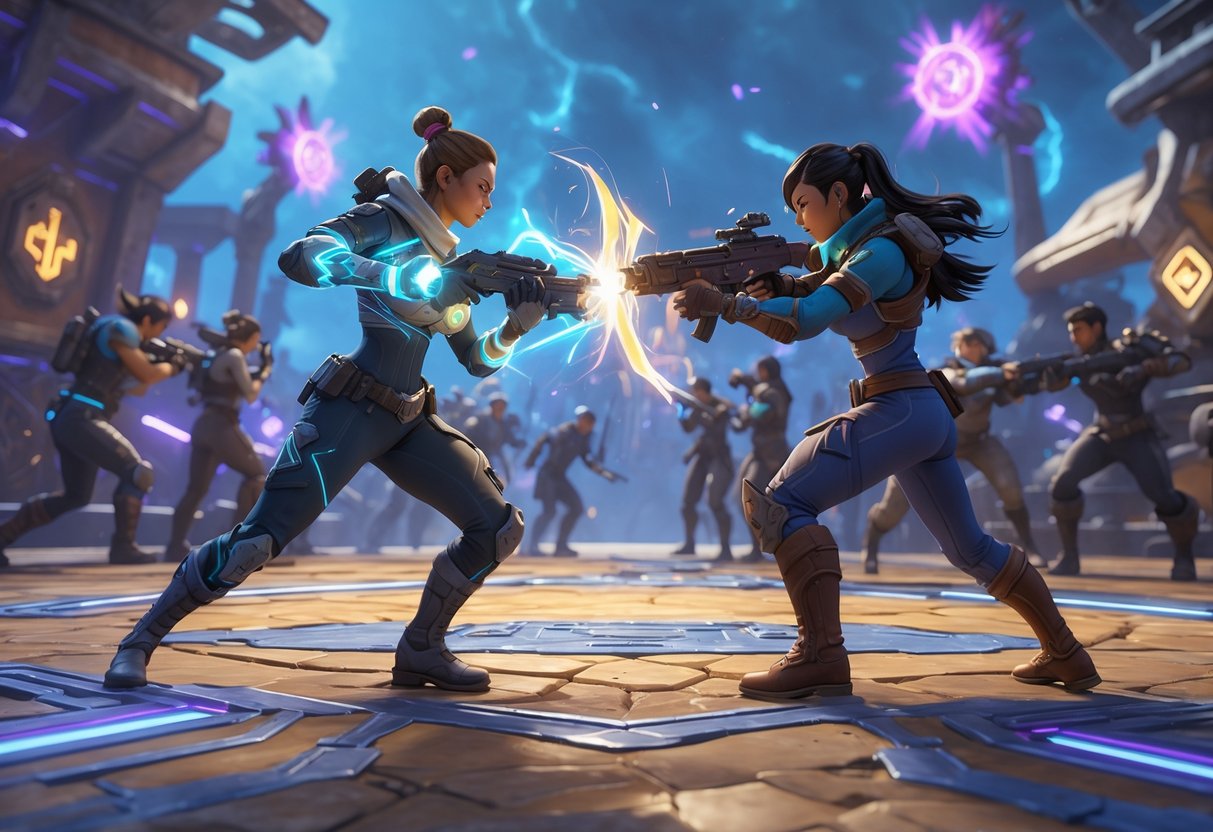
People keep asking how Deadlock blends shooting mechanics with MOBA strategy and what sets this hybrid apart from traditional games.
What are the core gameplay mechanics in a Deadlock MOBA shooter hybrid?
Deadlock mashes up third-person shooting with MOBA staples like character progression and team fights. You aim and shoot for your main damage—no auto-attacks here.
The movement system lets you double jump, dash, and slide. Fights feel way more dynamic than just standing around trading shots.
Characters level up during matches and buy upgrades to get stronger. You farm creeps and take objectives, just like in League or Dota.
Matches are 6v6 on maps with lanes and jungle zones. Teams push toward the enemy base and defend their own.
How does character selection work in a Deadlock MOBA shooter hybrid game?
Each character comes with unique abilities and fits certain team roles. You pick from tanks, damage dealers, and supports before the match starts.
Characters scale differently as the game goes on. Some shine early, others pop off in late-game team fights.
Team comp really matters. You’ll need a mix of roles to have a shot against organized teams.
Players can build their characters in different ways. That means you can tweak your playstyle based on what your team needs that match.
Can you explain the balance between MOBA elements and shooter gameplay in Deadlock hybrids?
Your gunplay does most of the damage. You have to aim well and manage your ammo, just like any shooter.
MOBA mechanics shape the match’s flow and strategy. Farming, controlling objectives, and team coordination are all still key.
Abilities work with your shooting, not instead of it. Special powers add to your gun damage, but don’t replace it.
Map control and vision play out like a MOBA. Teams fight for ground and info, and individual skill still decides plenty of fights.
What strategies are unique to playing a Deadlock MOBA shooter hybrid effectively?
Positioning is everything—you can get deleted fast if you’re caught. You’ll want to use cover and plan escapes during team fights.
Mobility skills let you find new attack angles. Players who get good at movement can really dominate fights.
Quick win: Warm up your aim in the shooting range before queuing. Early on, good gunplay matters more than MOBA know-how.
Teamwork needs both shooter-style callouts and MOBA-level planning. You’ll be calling enemy locations and planning rotations at the same time.
How do player roles and responsibilities differ from traditional MOBAs or shooters in Deadlock hybrids?
Supports still help teammates, but with good aim, they can do real damage too. The focus is more on utility than just healing.
Tanks need to know how to position, not just soak damage. You make space by moving smart and using cover.
Damage dealers have to juggle farming and fighting. You can’t just chase kills and ignore objectives like in some shooters.
Heads up: Don’t expect the roles to work exactly like other games. Each character mixes responsibilities, and you’ll have to adapt as matches play out.
What kind of content updates and community support can players expect for a Deadlock MOBA shooter hybrid?
Valve has a habit of rolling out balance updates for their competitive games. You can probably count on regular character tweaks and fresh content as time goes on.
Since Deadlock runs on a free-to-play model, much like Dota 2, players will likely see ongoing development. Cosmetic items and battle passes usually keep the lights on for these games.
Right now, Deadlock sits in private alpha. If you want in, you’ll need an invite from someone who already has access, and they’ll send it through Steam.
Players can look forward to community features—maybe things like replay systems or spectator modes. Valve’s track record suggests they’ll back competitive play and help the esports scene grow, though it’s still early days.

